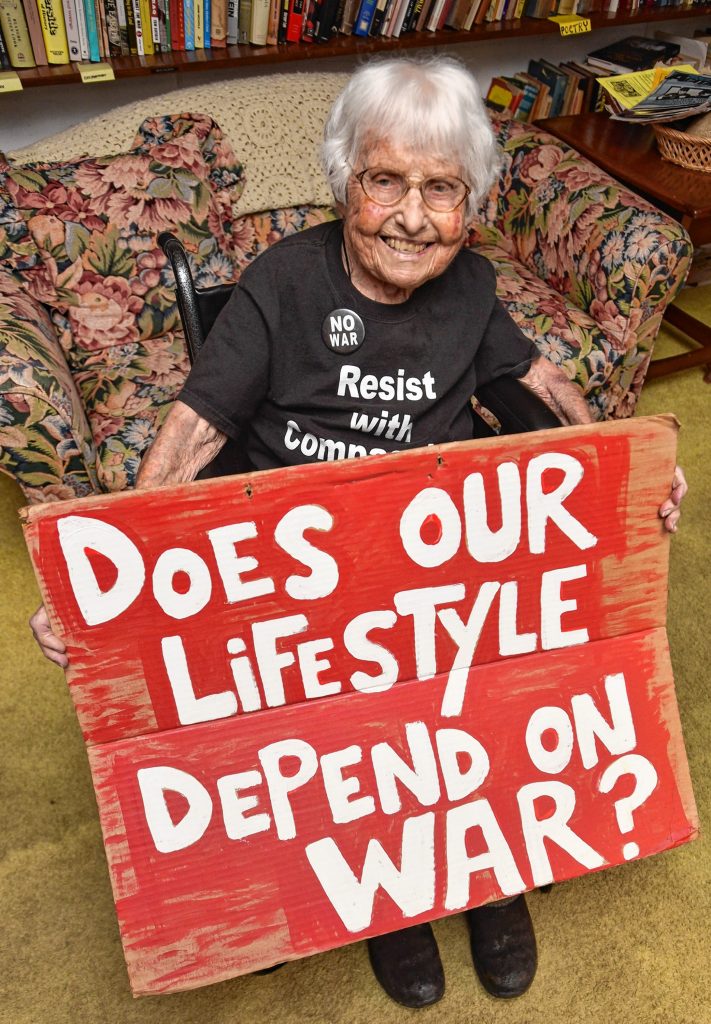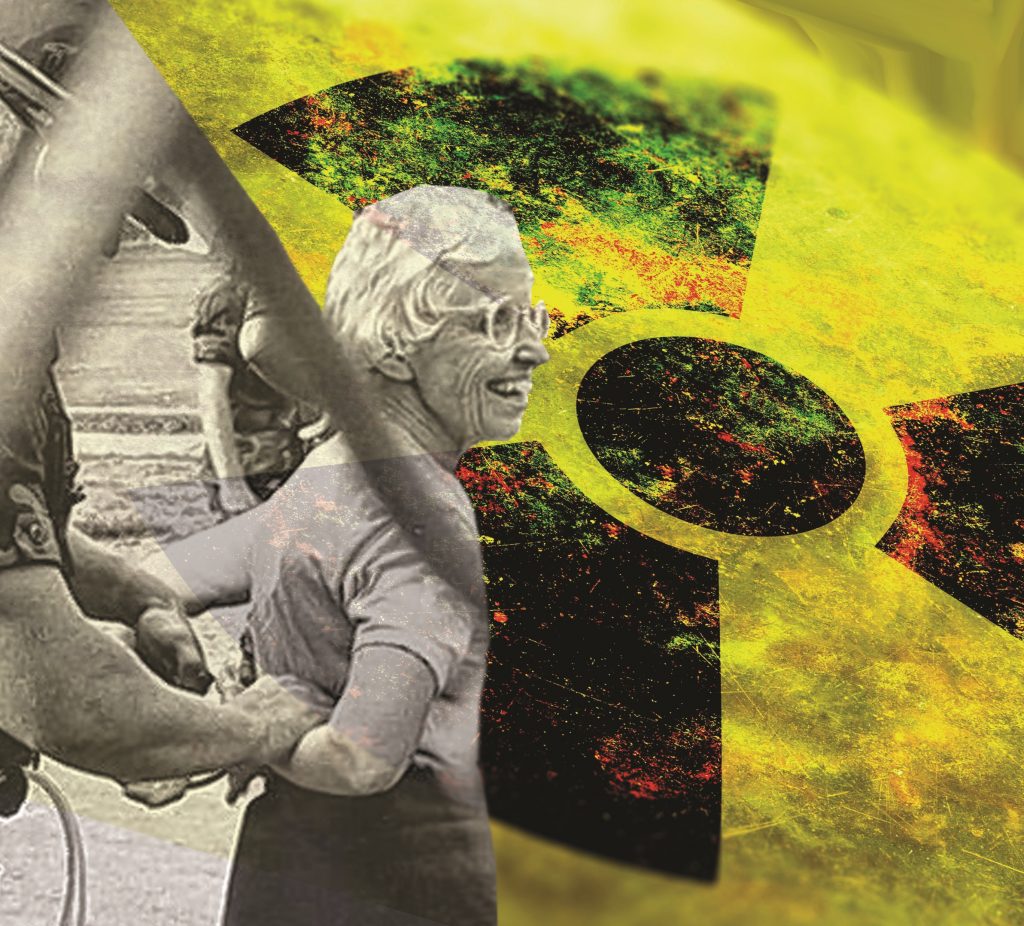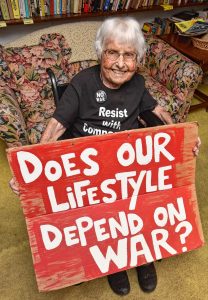So many lives changed on August 6, 1945, including mine. I was a 26-year-old American married to an aspiring radiologist. I listened to the radio as I ironed our clothes and learned that my country, the United States, had destroyed Hiroshima, Japan, by dropping an atomic bomb on it.
Perhaps, 74 years later, we’re immune to the consequences of what happened that day and on August 9, 1945, when we dropped another atomic bomb on Nagasaki, Japan.
The United States is the only nation in the world to have destroyed whole cities by dropping atomic bombs. We have also used radioactive depleted uranium on battlefields in Iraq, according to U.S. Defense Department records, and who knows where else.
Our economy depends on the fact that the United States spends more on its military budget than any nation in the world: $649 billion, more than double the military budget of China at $250 billion, next in line.
Make no mistake. Donald Trump’s flashy July 4 celebration of war and weapons in Washington, DC, calculated around selling U.S. weapons to whomever in the world: ironically, Japan and, oh, say, Saudi Arabia, Russia, China itself, Brazil, Mexico, and who knows who else?
Today, according to the Federation of American Scientists, the U.S. has nearly 4,000 nuclear weapons stockpiled, much more deadly than what we dropped on Hiroshima and Nagasaki in 1945.
Only the United States has ever waged nuclear war.
A study by Ira Helfand of the International Physicians for the Prevention of Nuclear War states that 100 Hiroshima-sized bombs could endanger the lives of 2 billion people on this planet. Most of the weapons in the United States arsenal are many times more powerful than that.
In 1980, though, we had nearly 30,000 nuclear bombs in our arsenal. I worried about what that meant for the world and launched a western Massachusetts campaign to freeze the development of nuclear weapons. That campaign eventually became national as people mobilized all over Massachusetts and the country to enact a freeze on nuclear weapons.
In the early 1980s, I found out about Dr. Randall Forsberg’s Call to Halt the Arms Race, the manifesto of the nuclear freeze campaign. Dr. Forsberg was associated with the Massachusetts Institute of Technology and had access to credible statistics about why to halt US manufacture of nuclear weapons.
Make no mistake. A relatively small amount of nuclear weapons can cause devastation to the world’s population. Perhaps no concern — not even global warming — rings more imminent than worrying about nuclear weapons.
When I heard about Randy Forsberg’s initiative in the early 1980s, I went to national American Friends Service Committee and proposed western Massachusetts involvement in a campaign for a freeze on U.S. manufacture of nuclear weapons.
The Friends said, “Yes, Frances. Please do mount a campaign to freeze U.S. manufacture of nuclear weapons.” I collaborated with Randy Kehler, then executive director of the Traprock Peace Center in Deerfield. We hired Judith Scheckel to coordinate our western Massachusetts nuclear freeze campaign by placing it on a referendum in congressional districts.
People mobilized by going door-to-door to get out the vote to support the nuclear freeze. Today, people would launch a big social media campaign, but in the 1980s, we didn’t have social media. Ronald Reagan, the Republican candidate, got lots of votes, but so did the freeze as a result of our mobilization.
In 1982, voters in eight states and several major cities, including one-fourth of the country’s population, voted for a worldwide nuclear freeze. In Massachusetts, nearly three-quarters — 73.7 percent — voted in favor.
Because of the 1980s freeze campaign, the United States reduced its stockpile of nuclear weapons and created a model for mobilization. But we still have about 4,000 nuclear weapons in our military stockpile. It’s time to mobilize again to get rid of them.
In order to sell weapons, including nuclear, to nations all over the world, President Trump staged a huge display of weaponry on the Washington Mall on Independence Day.
But nuclear weapons aren’t playthings even though they underpin the U.S’s policy of war, which serves as part of the basis of the U.S. economy. We should never forget that it doesn’t take many of them to destroy the world.
Now is the time to make a difference. Now is the time to stop building nuclear weapons.
Northampton resident Frances Crowe, 100, is a longtime activist.





